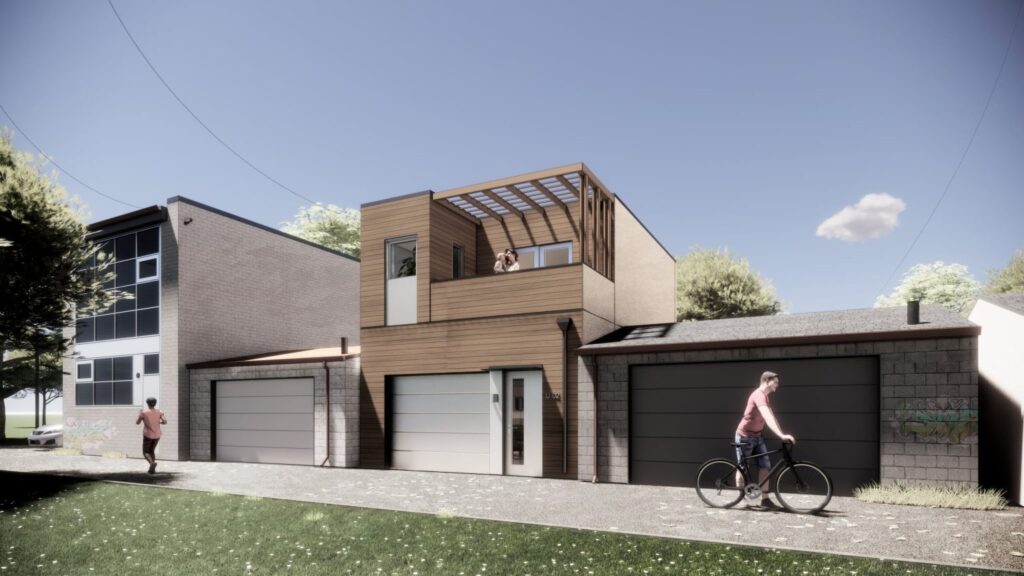Housing crisis inspires collaborative call for innovation
Solar panels, heat-exchange systems and green roofs may come to mind when people think of green real estate, yet sustainability solutions can take myriad shapes and forms, says George Carras, founder and CEO of R-LABS, a Canadian venture builder and partnership structure dedicated to unlocking industry innovation.
“Think of a family with a home in Toronto and an elderly relative living in Markham,” he says. “When grandma needs care or the family needs help with the kids, you can imagine them taking numerous trips back and forth. However, if they’re able to put in an accessory building, we can reduce the carbon footprint associated with the travels, add the Markham home to our housing stock and boost the family’s balance sheet.”
This approach shows a number of benefits, and helps optimize assets, and Mr. Carras believes a similar asset-optimization lens can be applied to the conversion of office buildings.
“We have excess office space – and we need housing, but office buildings weren’t built for residential configuration, and there are a number of stumbling blocks, zoning and infrastructure among them,” he says. “When we look at this from a problem-centric perspective, we can get a clear answer of what’s needed in the area, from housing to schools or other services.”
For Mr. Carras, it is all about the mindset. “You can choose to see your biggest challenges as your greatest opportunities, and all of a sudden, a problem-rich environment becomes ground for innovation – and this is part of our value proposition as an innovation cluster,” he says. “When we bring innovative thinking and creative business models to how we build and operate real estate, we can not only solve some of our local issues but also export our solutions globally.”
The challenges are significant, with numbers from a recent Canada Mortgage and Housing Corporation (CMHC) study showing that Canada needs to add 5.11 million homes over the course of the next eight years, Mr. Carras says. “Over the last 60 years or so, we’ve perhaps accomplished building two million homes in such a time period. We need innovation to take us to two to three times this magnitude for the housing industry.”
Yet it’s not just about creating the required number of units, he emphasizes. “The units have to be affordable across the entire range of the housing continuum, from shelter space and transitional housing all the way to market housing, according to the CMHC. Homes also have to be resilient and sustainable if we want to meet our emissions reduction goals.”
From the premise that no single entity can tackle such a big challenge alone, R-LABS has catalyzed an innovation-focused collaboration, with partners from across the entire industry. “This is unique in the world,” he says. “There are five areas of focus: leadership, affordability and supply, low carbon and climate resiliency, optimization and infrastructure, which encompasses labour, capital and policy.”
Partnerships bring the synergistic capabilities that are essential for moving towards net zero, he says. “Real estate contributes about 40 per cent of global carbon emissions, with approximately 28 per cent coming from building operations and 12 per cent from construction and materials. The challenge is that the way we’re building and running things hasn’t changed a lot.”
Mr. Carras proposes a thought experiment, where a pilot and a bricklayer from the 1950s would have been cryogenically frozen and reanimated in 2024. “If we told the pilot to go into the cockpit of the 787 and take us to London, he wouldn’t be able to navigate the modern airplane’s technology. The bricklayer, on the other hand, could be productive right away,” he explains. “We need new models in how we operate buildings and how we build them.”
Examples for enhancing building operations include technology solutions, including highly efficient heating and cooling systems, that make buildings smarter. On the building side, he envisions “unique opportunities in Canada, for example, using prefab wood and mass timber construction.”
A company called Assembly, for instance, proposes that efficient, prefabricated wood buildings for urban environments can help meet the twin challenges of sustainability and affordability.
By offering services that include design, manufacturing and construction – with fixed prices and an integrated project delivery approach – Assembly aims to deliver “mid-rise, mass-timber residential buildings as solutions for investors, developers, non-profits and municipalities.”
Industry innovation needs to include “novel thinking and experimentation,” says Mr. Carras. “And when business models impose limits, we need to embrace new models as part of a smart enterprise value creation strategy.”
With housing challenges – and the built environment – “we are all in this together,” he says. “From governments and industry to non-profits and consumers, we are all invested in finding the right solutions. We need innovation of all shapes and sizes. It could be entrepreneurs, corporations, policy-makers and advocates as well as citizens embracing new models and behaviours – and everyone is doing this from a place of enlightened self-interest.”
What counts, Mr. Carras suggests, is less the event we’re facing and more how we respond. “There are three ways to respond: the first is denial, the second blame, and the third innovation.
“Needless to say, for tackling the climate crisis, we have to respond with innovation.”
“You can choose to see your biggest challenges as your greatest opportunities, and all of a sudden, a problem-rich environment becomes ground for innovation…”
George Carras
Founder and CEO, R-LABS
First published as part of the Green real estate special feature in the May 7 Globe and Mail, produced by Randall Anthony Communication.

